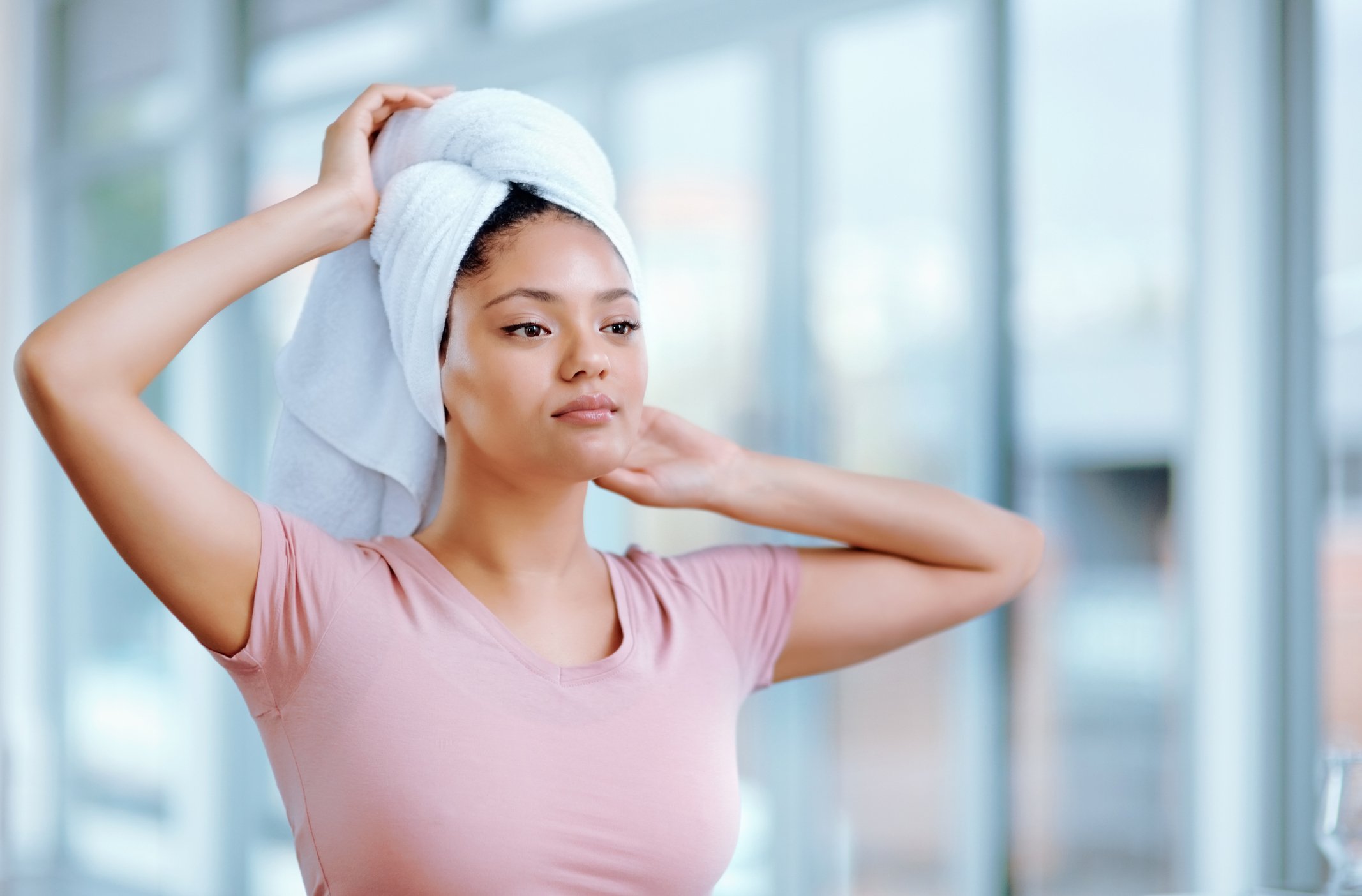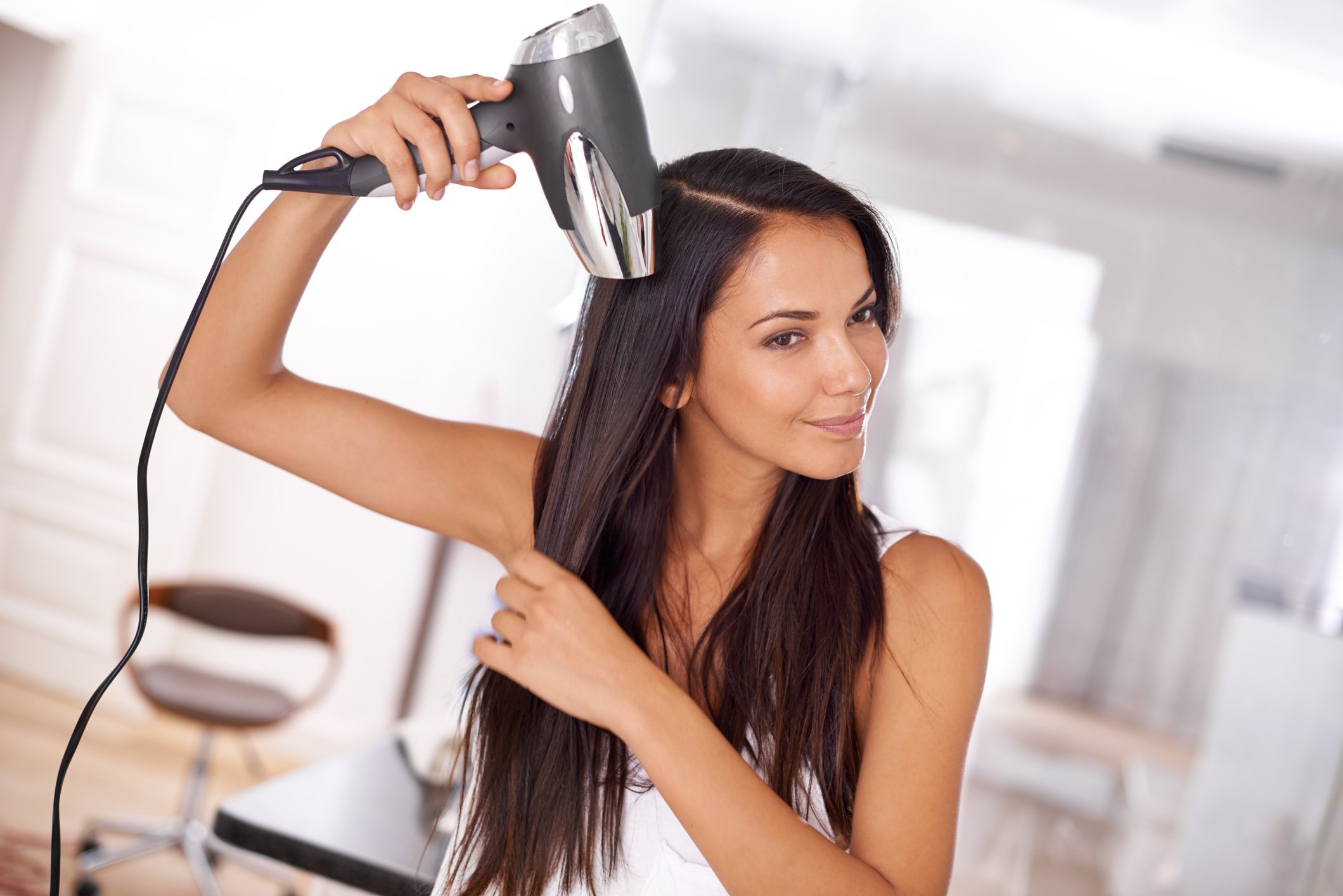Are You Damaging Your Hair While Drying It?
After you get out of the shower with your hair soaking wet, what do you do with it? Do you wrap it up in a tight knot on the top of your head? Do you rub your strands vigorously with a towel? Do you immediately blast it with a blow dryer?
Contrary to popular belief, there are “right” and “wrong” ways to dry your hair. The wrong ways aren’t merely inefficient or frizz-producing though—they are likely causing damage to your locks almost every day!
Here’s what you should know about common hair-drying mistakes and how to dry your strands without causing damage.
How can hair drying lead to damage?
The first thing you might be wondering is, “How can drying my hair cause damage in the first place?” As it turns out, drying your hair incorrectly can be one of the most prevalent sources of damage for your hair, since it occurs on an almost daily basis!
Hair is in its most fragile state when it is wet. The chemical bonds formed in wet hair are much weaker than the ones formed in dry hair, which means your strands can be stretched and broken much more easily. The cuticle—the outermost layer of hair—is most affected while wet. The “scales” that make up the cuticle can lift and crack when wet hair is mishandled, leading to frizz and exposing the inner layers of your hair to damage.
This is why it’s extremely important to handle wet hair with care, and why it’s a good idea to gently dry your hair instead of sleeping on or pulling a hat on top of wet strands!
Common hair-drying mistakes

There are a lot of potential ways to dry your hair, but many of them might be damaging! Here are some of the most common drying mistakes that can damage strands:
- Rough towel drying: If you’re in a rush, you might try to speed up the drying process by tossing your towel over your hair and rubbing it vigorously against the strands. But this is a huge mistake! Roughly rubbing a fluffy bath towel on your hair can damage the cuticle, causing frizziness and even strand breakage.
- Leaving it in a towel wrap: If you want to get dressed or do your makeup while your hair dries, you might wrap it up in a “towel turban” to simultaneously dry your hair and keep it out of your face. While doing this is usually okay in the short term, leaving your hair wrapped up tightly for extended periods of time can put stress on the hair because it is twisted and pulled at the scalp.
- Blow drying with excessive heat: Using a blow dryer is one of the most common ways to dry wet hair. Unfortunately, applying excessive heat from a blow dryer or drying it incorrectly could lead to damage. Avoid using the highest heat setting, or else you could dry out your hair to the core, leaving it dull-looking, brittle and frizzy. Heat from a blow dryer used too closely to the head could also dry out your scalp, causing it to itch and flake.
- Heat styling immediately: One of the worst things you can do to wet (or even damp!) hair is use a hot tool like a flat iron or curling iron on it. You might think it’s a fast and easy way to zap water from your hair, but it’s likely to cause more harm than good. These tools get extremely hot, which can be damaging to hair even when it’s dry. Unfortunately, applying high heat to wet hair causes water to boil and evaporate rapidly from inside your hair. This can scorch the strands and cause bubbles in the cuticle, making your hair look and feel rough, brittle and damaged.
Drying your hair the right way
The best way to dry your hair is to let it happen naturally through air drying. However, you can still squeeze out extra water right after your shower to avoid dripping water and to speed up the process.
First, squeeze your wet strands to get as much water out as you can with just your hands. Next, rather than rub a standard bath towel on your hair, grab a T-shirt or a microfiber towel—the smoother the fabric, the better! Wrap it around your strands and squeeze, working from your scalp to your ends. Repeat this gentle process until a sufficient amount of water has been absorbed from your hair. Then, leave your hair down to air dry.

If you’re in a hurry and can’t wait for your hair to dry on its own, repeat the squeezing process, then follow up with a quick blow dry. Use the medium-heat or cool setting and hold the blow dryer at least 6 inches away from your scalp to avoid damage.
Of course, healthy hair goes far beyond drying it properly each day. Combine proper drying techniques with the right shampooing and conditioning regimen, limited heat styling and proper nutrition to get the best results!


Leave a comment